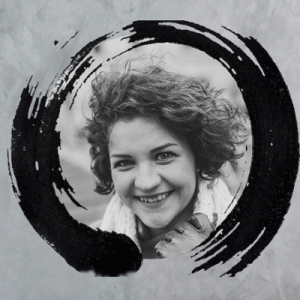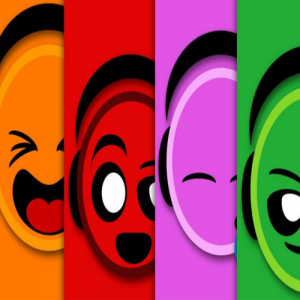A lot of people have asked me to explain how I lead in Salsa; and more often than not it is not what I do but how and why I lead certain moves. I have been dancing Salsa for 13 years and refining my understanding of the leading and following dynamics. In the spirit of sharing I have decided to write a five part series to put down onto paper the concepts I use in leading in Salsa. In this article I will not be talking about techniques but I will highlight my philosophy of leading. We will start by talking about the four different types of leading I find in Salsa: Active, Passive, Suggestive and Disconnected. I will then talk about being an empathetic leader and the impact on the co-creation aspect of partnerwork.
Active
By far this is the most dominant form of leading in the world of Salsa. This is where the role of the leader is to apply energy, generate force and momentum and provide a lead for the follower. The followers role is to fine tune themselves as much as possible in order to respond to different leaders. For the majority of partnerwork classes this is what is taught and on the dance floor this is what is experienced.
This is a very simplistic model of Salsa which is why this form is so common. This requires the least amount of individuality as the dancers will focus on learning as much material to be providers of entertainment for the followers to enjoy. This is also the more financially lucrative model as this is a great way to commoditise Salsa.
Passive
This is more common among well-travelled and experienced dancers. The leader is not dictating the dance but initiating movements and then allowing time and space for the followers to express themselves and inspire. This leading form means that both Leader and Follower have room for interpreting the music and suggesting the direction of the dance.
This is far harder to teach and learn as it is not about learning packaged moves but requires the teacher to take students on a journey of creativity. As such this is rarely taught but gained through osmosis after years of dance floor practise.
Suggestive
Along with Passive Leading, this is not commonly taught but gained through years of dance floor observation and experience. As a younger dancer, I remember fellow students laughing at dancers who are not physically connected but synchronising themselves to music with a connection that I did not understand at the time. I remember asking the student why they are laughing and they mentioned that it was not possible to lead without touching.
Positioning, energy levels, flow, orientation of body are among the many tools that can be used to give a strong indication of where you want the dance to go. The Suggestive Dancing form does not give a creative premium on who is leading and following but provides both partners with a chance to give creative input and directional control of the dance.
Disconnected
As with active leading, this is very common within the current Salsa world. How often have you seen partners ignoring each other, looking at the floor while doing footwork or the worse sin of Salsa – look for their next dance partner while currently occupied.
I personally believe that this is systematic of 1) the way self movement is taught as you do not have a partner in front of you, 2) the emphasis on “Shining” when you are away from your partner. I believe that the word Shine is probably the most poisonous phrase in Salsa as it gives the wrong message and 3) the need to look good as opposed to feeling good on the dance floor.
The Empathetic Leader
Active and Disconnected forms are by far the most common in the world of Salsa whereas Passive and Suggestive are far less common. My personal battle is to understand how to get more dancers at all levels to participate in Passive and Suggestive leading as they are inherently more empathetic.
The art of being an empathetic dancer, both leader and follower, is the ability to pay attention to and connect with your partner first and foremost. While some think that this is a quality of the highest levels of Salsa I see no reason why there cannot be empathy at all levels.
I consider myself to be a very empathetic leader. This means that I will always try to adjust to my partner, feel her groove and give her the dance that I believe she is looking for. Sometimes you will see me going through endless crazy patterns, some times you will see a fragmented start-stop dance or at times simple and smooth dancing.
Apathetic vs Empathetic
I have had amazing experiences dancing with people of all levels. I used to think that the better I am the more chances of having amazing dances but today I believe that this cannot be further from the truth. I believe that the most amazing dances I have had were due to matching empathy levels which explains why dancers of all levels can have an memorable experiences.
I also used to think my worst dances were due to my skills not being good enough. As a source of motivation, this was great but after years of training I realised that if my dance partner was apathetic then there was nothing I could do. However, if I was dancing with a beginner who was empathetic, engaging with me and smiling I could have an amazing time.
Summary
The first part of this leading series is all about empathy which is one of the driving philosophies behind my leading. Letting go of the apathetic and disconnected leading for the Passive and Suggestive leading will train empathy and in a very real way change your dancing.
Next week I will release the next part of my series which is focused around developing a connection and the quality of a connection.
I hope you found this interesting and I would love to know your comments. Please post below or message me with your thoughts.





Wow what a great article, Toang. Thanks again for sharing these deep thoughts! I would like to put in some of my experience.
If you want to lead empathic or even suggestive, I think it is important to understand and feel the music. Salsa music has very predictive structure. You don’t even have to know the song to predict the breaks, the changes and sometimes even the end.
Also you have to feel confident. Your confidence will transfer to your partner and he will feel it. You feel great, your partner will too.
Unfortunately I never learned any of that in my salsa classes. Learning salsa was mostly: guy do these steps – ladies do that – basically little to no leading at all. So I think it is important to apply everything you learn in salsa classes directly in social dance. If you don’t it will slip and after 1 or 2 weeks it will be as if you never learned it at all…
And then there is this problem of different skill level.
You dance with some Rambo show dancer, that is just waiting for the next 10x turn – or you dance with someone who just started dancing 2 weeks ago…
As you said, as a leader this shouldn’t matter. It’s about eye contact, the smile, feeling the music, getting to know each other, the chemistry.
I had some of my best dances with absolute beginners. I also had dances I called the best dances in my life with someone. Next time I dance with the same person some other day: disaster! There are just so many influences that make a good dance… uncontrollable.
I am really exited about the next parts of your leading series. Keep it on!
Cheers
Stefan